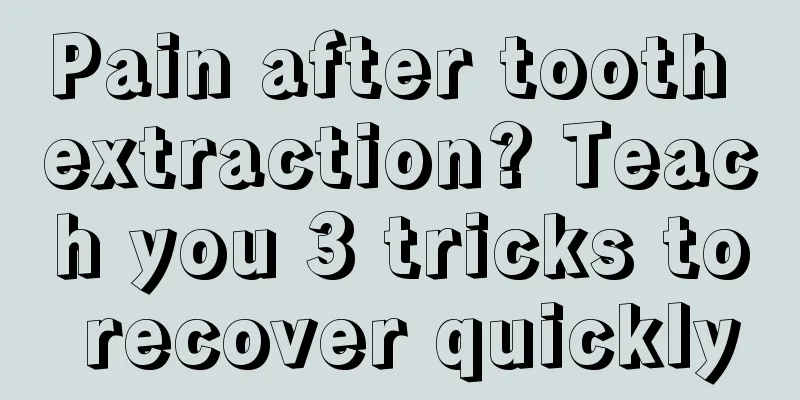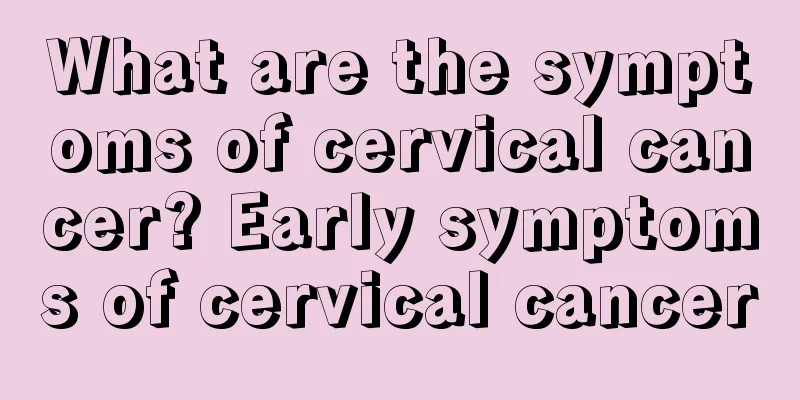Pain after tooth extraction? Teach you 3 tricks to recover quickly

|
Toothache is very uncomfortable, so many people choose to extract teeth to solve toothache, but the teeth will still hurt after extraction, so it is necessary to find timely and effective relief methods. Among them, avoiding infection is the most important step, so friends who have tooth extraction can learn about it. 1. When will the three types of adjacent tooth pain recover? 1. For the first type of common inflammation, the mouth opening may be restricted after taking medicine, but it will gradually ease within a week, including toothache. If it is the second type, the pain after alveolar bone extraction is unbearable and the mouth opening is more severely restricted. For some patients, anti-inflammatory drugs are ineffective and even eating becomes a problem. The local area must be cleaned first and then the alveolar bone repair surgery must be performed, which takes 3 months to heal. 2. If the swelling has gone but you still have difficulty opening your mouth, you must continue to apply hot compresses to your cheeks and do some rehabilitation treatments, such as joint massage or acupuncture and physical therapy. You will recover in about a week. The third type of periodontal membrane damage will repair itself. During this period, let your teeth rest more and try to bite things with the teeth on the other side. It depends on the extent of the damage to the periodontal membrane. It will take at least 1 to 3 months to recover. 2. What are the specific treatment methods for the three types of adjacent tooth pain? 1. Inflammation after tooth extraction It is normal for the wound to swell up right after the extraction. If the inflammation has not subsided, you need to take anti-inflammatory drugs and antibiotics. For example, metronidazole tablets or amoxicillin capsules have obvious anti-inflammatory and antibacterial effects. You can stop taking the medicine in about 3 to 5 days. You can apply ice to relieve swelling in the first two days. After 24 hours, use KIN Gillan mouthwash containing chlorhexidine to reduce inflammation and kill bacteria to prevent wound infection. 2. Alveolar bone damage Take an X-ray to check whether the alveolar bone is fractured or the bite is disordered. Perform alveolar bone repair one and a half months after tooth extraction. If the alveolar bone is protruding, pressure reduction should be performed and the bone will gradually be absorbed, but it will take a longer time. 3. Periodontal ligament damage For minor damage, in order to avoid causing secondary damage, fix the adjacent teeth and periodontium, let it heal slowly, and be careful not to eat hard food. If you experience toothache after tooth extraction, first check the condition of the gums near the alveolar socket, or if there is any abnormal color, go to the hospital for an X-ray and diagnosis. Early treatment can lead to early recovery! |
<<: How to relieve depression?
>>: What to do if facial bones protrude?
Recommend
The four dirtiest places on the human body
The sanitary dead corners in the home should be c...
What are the differential diagnosis methods for ovarian tumors
Nowadays, women are the hope of the motherland be...
What causes a hot tongue?
Excessive liver fire is a very common phenomenon ...
What are the self-help methods for mental anxiety disorder
Due to the increasing pressure in our daily lives...
What to do if you get a sore throat after taking supplements
Supplements are of great help to our physical hea...
What are the symptoms of headache, diarrhea and general fatigue?
Headache and diarrhea are relatively common probl...
How to maintain a leather watch strap
Men generally regard watches as a symbol of statu...
Can follicle 13 be released within three days?
The follicles exist in the female ovaries. Becaus...
Can I eat peanuts if I have high blood lipids? How to eat them?
Peanuts are rich in unsaturated fatty acids and a...
Can glioma be cured?
Glioma is a malignant tumor in the brain. Once th...
How long can a person with brain metastasis live after lung cancer surgery
How long can a lung cancer patient live? I believ...
Which hospital is good for treating laryngeal cancer
Laryngeal cancer is the most common disease in th...
Which factors are directly related to the cause of rectal cancer
So far, most people believe that the cause of rec...
Blackhead-like things grow on my body
Sometimes, we find many small black spots on our ...
Several treatment options for small cell lung cancer
In recent years, nasopharyngeal carcinoma is a ma...









